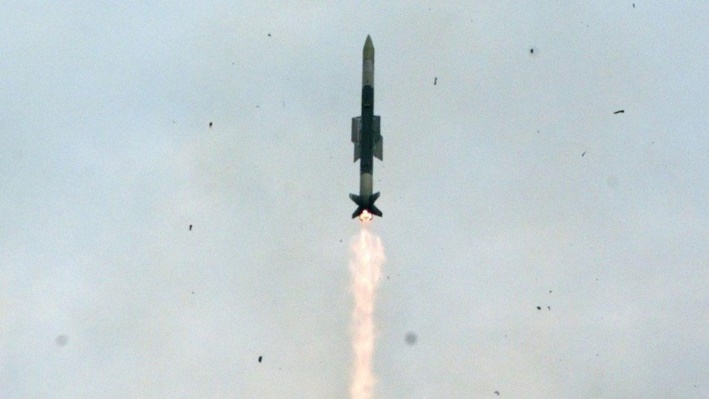Important Facts For Prelims
Vertical Launch Short Range Surface to Air Missile
- 25 Jun 2022
- 5 min read
Why in News?
Recently, Vertical Launch Short Range Surface to Air Missile (VL-SRSAM) was successfully flight-tested by Defence Research & Development Organisation (DRDO) and the Indian Navy from an Indian Naval Ship at Integrated Test Range (ITR), Chandipur off the coast of Odisha.
Key Points
- About:
- VL-SRSAM has been designed and developed jointly by three facilities of the Defence Research and Development Organisation for deployment of Indian Naval warships.
- The missile has the capability of neutralizing various aerial threats at close ranges including sea-skimming targets.
- Sea skimming is a technique many anti-ship missiles and some fighter or strike aircraft use to avoid radar and infrared detection.
- Design:
- The missile has been designed to strike high-speed airborne targets at the range of 40 to 50 km and at an altitude of around 15 km.
- Its design is based on Astra missile which is a Beyond Visual Range Air to Air missile.
- Astra ("weapon") is India's first air-to-air all weather beyond-visual-range active radar homing air-to-air missile, developed by the Defence Research and Development Organization.
- A Beyond-Visual-Range missile (BVR) is an air-to-air missile that is capable of engaging at ranges of 20 nautical miles or beyond.
- Features:
- Cruciform wings: They are four small wings arranged like a cross on four sides and give the projective a stable aerodynamic posture.
- Thrust Vectoring: It is the ability to change the direction of the thrust from its engine, control the angular velocity and the attitude of the missile.
- Thrust is the force which moves an aircraft through the air.
- Canisterised system: The inside environment is controlled, thus making its transport and storage easier and improving the shelf life of weapons.
Naval Warfare
- It is a combat in and on the sea, the ocean, or any other battlespace involving a major body of water such as a large lake or wide river.
- Defence Mechanism:
- Chaffs:
- It is a countermeasure technology used worldwide to protect naval ships from enemy’s radar and Radio Frequency (RF) missile seekers.
- Missiles to counter Anti-Ship missiles:
- These systems have to have a swift detection mechanism and quick response to warships.
- Chaffs:
UPSC Civil Services Examination, Previous Year Question (PYQ)
Q. What is “Terminal High Altitude Area Defense (THAAD)”, sometimes seen in the news? (2018)
(a) An Israeli radar system
(b) India’s indigenous anti-missile programme
(c) An American anti-missile system
(d) A defence collaboration between Japan and South Korea.
Ans: (c)
Exp:
- Terminal High Altitude Area Defence (THAAD) is an American anti-missile system designed to intercept and destroy short and medium-range ballistic missiles during their “terminal” phase of flight when they are falling towards the target.
- They have the ability to intercept missiles inside and outside the atmosphere.
- It is interoperable with other ballistic missile defence systems and is highly mobile and deployable worldwide.
- Therefore, option (c) is the correct answer.
Q. From which one of the following did India buy the Barak anti-missile defence systems? (2008)
(a) Israel
(b) France
(c) Russia
(d) USA
Ans: (a)
Exp:
- Barak-8 is a supersonic, vertically-launched short range air defence system, with an operational range of about 5 to 100 km.
- It was designed and developed by Israel to protect its economic zones and strategic facilities from various threats.
- Therefore, option (a) is the correct answer





